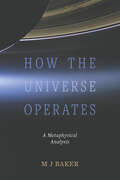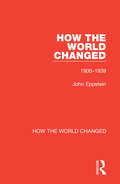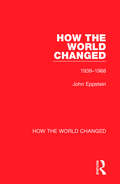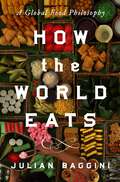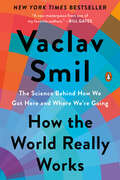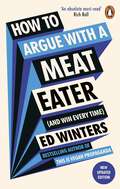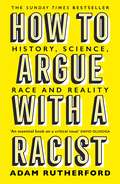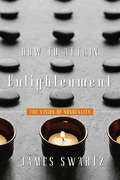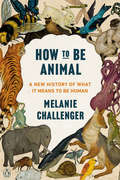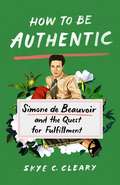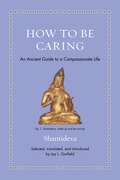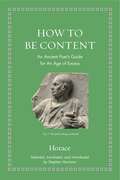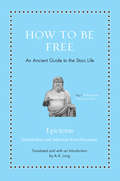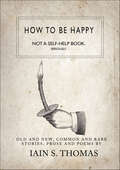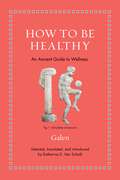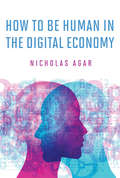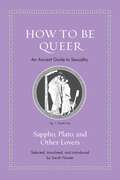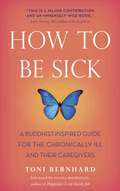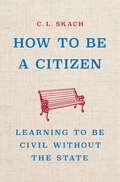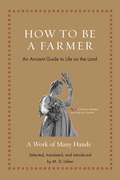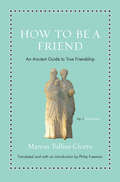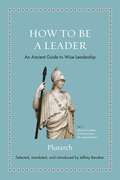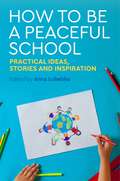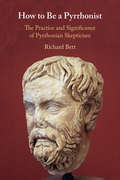- Table View
- List View
How the Universe Operates: A Metaphysical Analysis
by M J BakerWhy do the heavenly bodies behave in a contrary fashion to what we are familiar with on earth? Before a wheel can turn, we must ensure rim is joined to axle; before a couple can dance in circle, their hands must be joined. In contrast, the planets circle the sun and the moons circle the planets without any securing mechanism, and so precisely that their movements can be predicted to a millisecond. Again, why is it that, released from the effects of gravity, emollient matter like water or molten lead forms spontaneously into tiny globes, copying the form found in stars, planets and the sun? Are the tides satisfactorily explained by the thesis of gravitational ‘pull’ of moon and sun? If so, why does modern science have such difficulty reconciling the relative influences of these two bodies? What sort of reality is light, and why is the speed of light fixed and not infinite, at least in space? Answers to these and other questions may be found through recourse to the philosophy of Aristotle. The thinkers of the Enlightenment chose to discard Aristotle’s limited natural science. That was understandable. But they chose to discard his philosophy as well. This was unwise, as fresh study of Aristotle’s thinking will show.
How the World Changed: Volume 1 1900-1939 (How the World Changed)
by John EppsteinFirst published in 1969, How the World Changed: Volume 1 1900-1939 is the first of two volumes that together outline the political history of the twentieth century up to 1968. This volume extends from 1900-1939 and explores life prior to, during, and after the First World War. In doing so, it covers significant political events and features of the period, including the Chinese Revolution and the rise of Japan, the different stages of the First World War, the peace process, the Russian Revolution, economic challenges, and the British Empire and Commonwealth.
How the World Changed: Volume 2 1939-1968 (How the World Changed)
by John EppsteinFirst published in 1969, How the World Changed: Volume 2 1939-1968 is the second of two volumes that together outline the political history of the twentieth century up to 1968. This volume covers the period from 1939-1968 and examines the history and politics of the Second World War and the state of the world in the years that followed it, including economic recovery, Soviet expansion, the Chinese People’s Republic, and shifts in world power.
How the World Eats: A Global Food Philosophy
by Julian BagginiFrom the bestselling author of How the World Thinks, an exploration of how we grow, make, buy and eat our food around the world—and a proposal for a global philosophy of food.How we live is shaped by how we eat. You can see this in the vastly different approaches to growing, preparing and eating food around the world, such as the hunter-gatherer Hadza in Tanzania whose sustainable lifestyle is under threat in a crowded planet, or Western societies whose food is farmed or bred in vast intensive enterprises. And most of us now rely on a complex global food web of production, distribution, consumption and disposal, which is now contending with unprecedented challenges. The need for a better understanding of how we feed ourselves has never been more urgent. In this wide-ranging and definitive book, philosopher Julian Baggini expertly delves into the best and worst food practises in a huge array of different societies, past and present. His exploration takes him from cutting-edge technologies, such as new farming methods, cultured meat, GM and astronaut food, to the ethics and health of ultra processed food and aquaculture, as he takes a forensic look at the effectiveness of our food governance, the difficulties of food wastage and the effects of commodification. Extracting essential principles to guide how we eat in the future, How the World Eats is a thought-provoking and illuminating call for a pluralistic, humane, resourceful and equitable global food philosophy that will guide us towards a food system fit for the twenty-first century and beyond.
How the World Really Works: The Science Behind How We Got Here and Where We're Going
by Vaclav SmilINSTANT NEW YORK TIMES BESTSELLER&“A new masterpiece from one of my favorite authors… [How The World Really Works] is a compelling and highly readable book that leaves readers with the fundamental grounding needed to help solve the world&’s toughest challenges.&”—Bill Gates &“Provocative but perceptive . . . You can agree or disagree with Smil—accept or doubt his &‘just the facts&’ posture—but you probably shouldn&’t ignore him.&”—The Washington PostAn essential analysis of the modern science and technology that makes our twenty-first century lives possible—a scientist's investigation into what science really does, and does not, accomplish.We have never had so much information at our fingertips and yet most of us don&’t know how the world really works. This book explains seven of the most fundamental realities governing our survival and prosperity. From energy and food production, through our material world and its globalization, to risks, our environment and its future, How the World Really Works offers a much-needed reality check—because before we can tackle problems effectively, we must understand the facts. In this ambitious and thought-provoking book we see, for example, that globalization isn&’t inevitable—the foolishness of allowing 70 per cent of the world&’s rubber gloves to be made in just one factory became glaringly obvious in 2020—and that our societies have been steadily increasing their dependence on fossil fuels, such that any promises of decarbonization by 2050 are a fairy tale. For example, each greenhouse-grown supermarket-bought tomato has the equivalent of five tablespoons of diesel embedded in its production, and we have no way of producing steel, cement or plastics at required scales without huge carbon emissions. Ultimately, Smil answers the most profound question of our age: are we irrevocably doomed or is a brighter utopia ahead? Compelling, data-rich and revisionist, this wonderfully broad, interdisciplinary guide finds faults with both extremes. Looking at the world through this quantitative lens reveals hidden truths that change the way we see our past, present and uncertain future.
How to Argue With a Meat Eater (And Win Every Time)
by Ed WintersAn empowering and deeply informative book – MobyNEW UPDATED EDITIONChallenge their beliefs; change the worldIf you are a vegan, you’ll know all too well how provocative it can be – you never know when you’ll be challenged or how. But being able to face down and rebut arguments against veganism is hugely important. Not just because many of the arguments lack substance, but because every interaction provides a pivotal moment to create change.Now with 7 new arguments, How to Argue With a Meat Eater will teach you to not only become a skilled debater, sharing the secrets of renowned vegan educator Ed Winters, but it will arm you with powerful facts and insights that will give pause to even the most devout meat eater.Providing you with the knowledge to become a better conversationalist and critical thinker, and the motivation to create a more ethical, kind and sustainable world, let this book be your guide and inspiration to know that, no matter what the argument, you can win every time.
How to Argue With a Racist: History, Science, Race and Reality
by Adam RutherfordTHE SUNDAY TIMES BESTSELLER'Nobody deals with challenging subjects more interestingly and compellingly than Adam Rutherford, and this may be his best book yet. This is a seriously important work' BILL BRYSON'A fascinating and timely refutation of the casual racism on the rise around the world. The ultimate anti-racism guide for data-lovers everywhere' CAROLINE CRIADO PEREZ ***Race is real because we perceive it. Racism is real because we enact it. But the appeal to science to strengthen racist ideologies is on the rise - and increasingly part of the public discourse on politics, migration, education, sport and intelligence. Stereotypes and myths about race are expressed not just by overt racists, but also by well-intentioned people whose experience and cultural baggage steer them towards views that are not supported by the modern study of human genetics. Even some scientists are uncomfortable expressing opinions deriving from their research where it relates to race. Yet, if understood correctly, science and history can be powerful allies against racism, granting the clearest view of how people actually are, rather than how we judge them to be.HOW TO ARGUE WITH A RACIST is a vital manifesto for a twenty-first century understanding of human evolution and variation, and a timely weapon against the misuse of science to justify bigotry.
How to Attain Enlightenment: The Vision of Non-Duality
by James Swartz&“Goes through the entire gamut of topics covered by the Vedas, making use of yoga, detachment, the ego, karma, dharma, love, meditation and much more.&” —East and West MagazineThis complete guide to enlightenment presents the wisdom of the ancient science of self-inquiry, a time-tested means for achieving spiritual freedom. The author discusses the purpose of self-inquiry, the quest for lasting happiness, issues of identity and transcendence, the role of wisdom and action, and the subconscious obstacles to freedom. He convincingly refutes the popular view that enlightenment is a unique state of consciousness and debunks a host of other enlightenment myths. In his straightforward style he reveals proven methods for purifying the mind, and includes chapters on love, the science of energy transformation and meditation. He takes the reader from the beginning to the end of the spiritual path, patiently unfolding the logic of self-inquiry.&“Vedanta is the original systemized enlightenment teaching, and James does an extraordinary job of extracting the essential nectar of the teachings from its dusty, ancient, Sanskrit origins and elucidating it with utmost clarity. One review cannot do this teaching, with its rich history and depth, even a modicum of justice. James&’s book is the best introduction there is to this subject.&” —Consciousness Junkie &“Explains methods of Vedanta in his survey of spiritual techniques, pairing theory with practice and explaining the myths and realities behind an enlightened state. From reflections on moving to a larger living space and clutter to assimilating experiences, How to Attain Enlightenment is a powerful survey any new age library needs.&” —The Bookwatch
How to Be Animal: A New History of What It Means to Be Human
by Melanie ChallengerWhat makes us human, and why are we so sure we're different from other animals?Humans are the most inquisitive, emotional, imaginative, aggressive, and baffling animals on the planet. But how well do we really know ourselves? How to Be Animal rewrites the remarkable human story and argues that at the heart of our psychology is a profound struggle with being animal.Most of our effects on the planet are the consequences of technological improvements and advances in our understanding of natural mechanisms. But why did this cognitive and technological edge come about in the first place and what kind of being has it made us? In How to Be Animal, Challenger brilliantly argues that this dizzying trajectory is the result of a singular characteristic of our species: the struggle with being an animal. Using a combination of memoir, historical texts, interweaving interviews and cultural and environmental history, How to Be Animal is lively and thought-provoking, bursting with ideas. This is a book for anyone who has ever contemplated what humans are and what makes our species so simultaneously brilliant and awful. Even more so, it is a book that asks tantalizing philosophical questions, such as whether and how human life matters. How to Be Animal is a tough-minded but ultimately sympathetic portrait of humanity. It exposes human beings as extraordinary animals defined by a profound struggle. In the third millennium, the way humans respond to being an animal among animals is the greatest and most inspiring challenge we face.
How to Be Authentic: Simone de Beauvoir and the Quest for Fulfillment
by Skye C. ClearyAn illuminating introduction to the philosophy of Simone de Beauvoir and its relevance to modern lifeIn an age of self-exposure, what does it mean to be authentic?“Authenticity” has become attenuated to the point of meaninglessness; everyone says to be yourself, but what that means is anyone’s guess. For existential philosopher Simone de Beauvoir, authenticity is not the revelation of a true self, but an exhilarating quest towards fulfillment. Her view, central to existentialism, is that we exist first and then spend the rest of our lives creating—not discovering—who we are. To be authentic is to live in pursuit of self-creation and self-renewal, with many different paths towards diverse goals.How to Be Authentic is a lively introduction to Simone de Beauvoir's philosophy of existentialism, as well as an exploration of the successes and failures that Beauvoir and other women have experienced in striving towards authenticity. Skye C. Cleary takes us through some of life’s major relationships and milestones: friendship; romantic love; marriage; children; and death, and examines how each offers an opportunity for us to stretch toward authenticity. While many people don’t get to choose their path in life—whether because of systemic oppression or the actions of other individuals—Cleary makes a compelling case that Beauvoir’s ideas can help us become more conscious of living purposefully, thoughtfully, and with vitality, and she shows us how to do so in responsible ways that invigorate every person’s right to become poets of their own lives.
How to Be Caring: An Ancient Guide to a Compassionate Life (Ancient Wisdom for Modern Readers)
by ShantidevaA vivid new translation of selections from an inspiring guide to self-transformation through kindness by an eighth-century Buddhist monkWritten by the medieval Indian Buddhist monk Shantideva, The Bodhicaryavatara is one of the most beloved and frequently taught works in Buddhism and a favorite of the Dalai Lama. An inspiring and powerful poem that uses a gripping, first-person, confessional voice, it is the most systematic work of ethical thought in the Indo-Tibetan Buddhist tradition. And its invaluable insights, exhortations, and encouragements about how we can relieve suffering by becoming more caring and compassionate are universal. In How to Be Caring, philosopher and Buddhist scholar Jay Garfield presents a lively new translation of selected verses from Shantideva&’s text that capture its powerful lessons for all of us. The result is the clearest, most concise, and most accessible introduction to this masterful Buddhist guidebook about how we can change the world by changing ourselves.Focusing on the life of a bodhisattva, a person committed to attaining awakening for the benefit of all beings, Shantideva argues that the first step to reducing suffering and making the world better is to conquer our own psychopathologies. Urging us to remember that we won&’t live forever and therefore need to think about what is most important, the work seeks to inspire us and teach us how to be more generous, thoughtful, polite, patient, committed, and self-aware. Featuring an introduction and the original Tibetan text on facing pages, this dazzling volume is filled with wisdom that still speaks directly to readers today.
How to Be Content: An Ancient Poet's Guide for an Age of Excess (Ancient Wisdom for Modern Readers)
by Horace Stephen HarrisonWhat the Roman poet Horace can teach us about how to live a life of contentment What are the secrets to a contented life? One of Rome’s greatest and most influential poets, Horace (65–8 BCE) has been cherished by readers for more than two thousand years not only for his wit, style, and reflections on Roman society, but also for his wisdom about how to live a good life—above all else, a life of contentment in a world of materialistic excess and personal pressures. In How to Be Content, Stephen Harrison, a leading authority on the poet, provides fresh, contemporary translations of poems from across Horace’s works that continue to offer important lessons about the good life, friendship, love, and death.Living during the reign of Rome’s first emperor, Horace drew on Greek and Roman philosophy, especially Stoicism and Epicureanism, to write poems that reflect on how to live a thoughtful and moderate life amid mindless overconsumption, how to achieve and maintain true love and friendship, and how to face disaster and death with patience and courage. From memorable counsel on the pointlessness of worrying about the future to valuable advice about living in the moment, these poems, by the man who famously advised us to carpe diem, or “harvest the day,” continue to provide brilliant meditations on perennial human problems.Featuring translations of, and commentary on, complete poems from Horace’s Odes, Satires, Epistles, and Epodes, accompanied by the original Latin, How to Be Content is both an ideal introduction to Horace and a compelling book of timeless wisdom.
How to Be Free: An Ancient Guide to the Stoic Life (Ancient Wisdom for Modern Readers)
by Epictetus Anthony LongA superb new edition of Epictetus’s famed handbook on Stoicism—translated by one of the world’s leading authorities on Stoic philosophyBorn a slave, the Roman Stoic philosopher Epictetus (c. 55–135 AD) taught that mental freedom is supreme, since it can liberate one anywhere, even in a prison. In How to Be Free, A. A. Long—one of the world’s leading authorities on Stoicism and a pioneer in its remarkable contemporary revival—provides a superb new edition of Epictetus’s celebrated guide to the Stoic philosophy of life (the Encheiridion) along with a selection of related reflections in his Discourses.Freedom, for Epictetus, is not a human right or a political prerogative but a psychological and ethical achievement, a gift that we alone can bestow on ourselves. We can all be free, but only if we learn to assign paramount value to what we can control (our motivations and reactions), treat what we cannot control with equanimity, and view our circumstances as opportunities to do well and be well, no matter what happens to us through misfortune or the actions of other people.How to Be Free features splendid new translations and the original Greek on facing pages, a compelling introduction that sets Epictetus in context and describes the importance of Stoic freedom today, and an invaluable glossary of key words and concepts. The result is an unmatched introduction to this powerful method of managing emotions and handling life’s situations, from the most ordinary to the most demanding.
How to Be Happy: Old and New, Common and Rare Stories, Prose and Poems
by Iain ThomasCentral Avenue Publishing is proud to publish another book by the widely acclaimed poet Iain S. Thomas. As many have noted on various social media platforms, there have been some issues that have led to the delayed release of this book. For this, we apologise and hopefully the content of the book will clarify the circumstances surrounding this delay. We feel we should also point out that this is not technically a self-help book, but it does contain some poignant prose, poetry and stories which may or may not lead you to happiness.Mostly, it is the rather unfortunate chronicle of a man's attempt to write the book heís promised his publisher, no matter the cost to his sanity.
How to Be Healthy: An Ancient Guide to Wellness (Ancient Wisdom for Modern Readers)
by GalenTimeless wisdom about how to be healthy in body and mind from one of the greatest physicians of the ancient worldThe second-century Greek physician Galen—the most famous doctor in antiquity after Hippocrates—is a central figure in Western medicine. A talented doctor, surgeon, writer, philosopher, teacher, pharmacologist, and inventor, Galen attended the court of Marcus Aurelius, living through outbreaks of plague (likely smallpox) that devastated the Roman Empire. He also served as physician for professional gladiators, boasting that only two fighters died during his first year (his predecessor had lost sixteen). In writings that provided the foundation of Western medicine up to the nineteenth century, Galen created a unified account of health and disease. In How to Be Healthy, practicing physician and classical historian Katherine Van Schaik presents a collection of Galen’s enduring insights about how we can take care of our bodies and minds, prevent disease, and reach a healthy old age.Although we now know that many of Galen’s ideas about physiology are wrong, How to Be Healthy shows that much of his advice remains sound. In these selections from his writings, presented in fresh translations, Galen discusses the art of medicine, exercise and diet, the mind-body connection, the difficulty of applying general medical principles to individuals, and much more. Featuring an introduction, brief commentaries that connect ancient medical practices to modern ones, and the original Greek on facing pages, How to Be Healthy offers an entertaining and enlightening new perspective on the age-old pursuit of wellness, from the importance of “the exercise with a small ball” to the benefits of “avoiding distress.”
How to Be Human in the Digital Economy (The\mit Press Ser.)
by Nicholas AgarAn argument in favor of finding a place for humans (and humanness) in the future digital economy.In the digital economy, accountants, baristas, and cashiers can be automated out of employment; so can surgeons, airline pilots, and cab drivers. Machines will be able to do these jobs more efficiently, accurately, and inexpensively. But, Nicholas Agar warns in this provocative book, these developments could result in a radically disempowered humanity.The digital revolution has brought us new gadgets and new things to do with them. The digital revolution also brings the digital economy, with machines capable of doing humans' jobs. Agar explains that developments in artificial intelligence enable computers to take over not just routine tasks but also the kind of “mind work” that previously relied on human intellect, and that this threatens human agency. The solution, Agar argues, is a hybrid social-digital economy. The key value of the digital economy is efficiency. The key value of the social economy is humanness.A social economy would be centered on connections between human minds. We should reject some digital automation because machines will always be poor substitutes for humans in roles that involve direct contact with other humans. A machine can count out pills and pour out coffee, but we want our nurses and baristas to have minds like ours. In a hybrid social-digital economy, people do the jobs for which feelings matter and machines take on data-intensive work. But humans will have to insist on their relevance in a digital age.
How to Be Queer: An Ancient Guide to Sexuality (Ancient Wisdom for Modern Readers)
by Sarah NooterAn irresistible anthology of ancient Greek writings that explore queer desire and loveEros, limb-loosening, whirls me about again,that bittersweet, implacable creature.—SapphoThe idea of sexual fluidity may seem new, but it is at least as old as the ancient Greeks, who wrote about queer experiences with remarkable frankness, wit, and insight. How to Be Queer is an infatuating collection of these writings about desire, love, and lust between men, between women, and between humans and gods, in lucid and lively new translations. Filled with enthralling stories, this anthology invites readers of all sexualities and identities to explore writings that describe many kinds of erotic encounters and feelings, and that envision a playful and passionate approach to sexuality as part of a rich and fulfilling life.How to Be Queer starts with Homer&’s Iliad and moves through lyric poetry, tragedy, comedy, philosophy, and biography, drawing on a wide range of authors, including Sappho, Plato, Anacreon, Pindar, Theognis, Aristophanes, and Xenophon. It features both beautiful poetry and thought-provoking prose, emotional outpourings and humorous anecdotes. From Homer&’s story of the relationship between Achilles and Patroclus, one of the most intense between men in world literature, to Sappho&’s lyrics on the pleasures and pains of loving women, these writings show the many meanings of what the Greeks called eros.Complete with brief introductions to the selections, and with the original Greek on facing pages, How to Be Queer reveals what the Greeks knew long ago—that the erotic and queer are a source of life and a cause for celebration.
How to Be Sick
by Sylvia Boorstein Toni BernhardThis life-affirming, instructive, and thoroughly inspiring book is a must-read for anyone who is - or who might one day be - sick. It can also be the perfect gift of guidance, encouragement, and uplifting inspiration to family, friends, and loved ones struggling with the many terrifying or disheartening life changes that come so close on the heels of a diagnosis of a chronic condition or life-threatening illness. Authentic and graceful, How to be Sick reminds us of our endless inner freedom, even under high degrees of suffering and pain. The author - who became ill while a university law professor in the prime of her career - tells the reader how she got sick and, to her and her partner's bewilderment, stayed that way. Toni had been a longtime meditator, going on long meditation retreats and spending many hours rigorously practicing, but soon discovered that she simply could no longer engage in those difficult and taxing forms. She had to learn ways to make "being sick" the heart of her spiritual practice - and through truly learning how to be sick, she learned how, even with many physical and energetic limitations, to live a life of equanimity, compassion, and joy. And whether we ourselves are ill or not, we can learn these vital arts from Bernhard's generous wisdom in How to Be Sick.
How to Be a Bad Emperor: An Ancient Guide to Truly Terrible Leaders (Ancient Wisdom for Modern Readers)
by SuetoniusWhat would Caligula do? What the worst Roman emperors can teach us about how not to leadIf recent history has taught us anything, it's that sometimes the best guide to leadership is the negative example. But that insight is hardly new. Nearly 2,000 years ago, Suetonius wrote Lives of the Caesars, perhaps the greatest negative leadership book of all time. He was ideally suited to write about terrible political leaders; after all, he was also the author of Famous Prostitutes and Words of Insult, both sadly lost. In How to Be a Bad Emperor, Josiah Osgood provides crisp new translations of Suetonius's briskly paced, darkly comic biographies of the Roman emperors Julius Caesar, Tiberius, Caligula, and Nero. Entertaining and shocking, the stories of these ancient anti-role models show how power inflames leaders' worst tendencies, causing almost incalculable damage.Complete with an introduction and the original Latin on facing pages, How to Be a Bad Emperor is both a gleeful romp through some of the nastiest bits of Roman history and a perceptive account of leadership gone monstrously awry. We meet Caesar, using his aunt's funeral to brag about his descent from gods and kings—and hiding his bald head with a comb-over and a laurel crown; Tiberius, neglecting public affairs in favor of wine, perverse sex, tortures, and executions; the insomniac sadist Caligula, flaunting his skill at cruel put-downs; and the matricide Nero, indulging his mania for public performance.In a world bristling with strongmen eager to cast themselves as the Caesars of our day, How to Be a Bad Emperor is a delightfully enlightening guide to the dangers of power without character.
How to Be a Citizen: Learning to Be Civil Without the State
by C. L. SkachAn expert on the writing of constitutions argues that the path to a thriving society begins with forgetting about them: "Not James Madison but Bob Dylan or Annie Lennox should be our guide" (Mark Tushnet). In 2009, constitutional scholar C. L. Skach went to Iraq to help revise the constitution. She survived a missile barrage in the Green Zone—an event that proved a breaking point in her thinking about constitutions. In short: they don&’t really work. In How to Be a Citizen, Skach calls to move beyond constitutions. She argues that just as complex natural systems spontaneously generate order, we can, too. Looking to pandemic gardens, Reggio-Emilia schools, and community-driven safety patrols, she envisions not government by force, but society that is local, cultivated, and true. Grounded in six principles as simple as a call to spend time on a park bench, this book shows how community spaces, education, and markets can be reshaped to nurture cooperation and encourage flourishing. Equal parts personal, philosophical, and practical, How to Be a Citizen invites us to see society not as something imposed by law, but rather something we create together.
How to Be a Farmer: An Ancient Guide to Life on the Land (Ancient Wisdom for Modern Readers)
by M. D. Usher Mark UsherA delightful anthology of classical Greek and Roman writings celebrating country living—ranging from a philosophy of compost to hymns to the gods of agricultureWhether you farm or garden, live in the country or long to move there, or simply enjoy an occasional rural retreat, you will be delighted by this cornucopia of writings about living and working on the land, harvested from the fertile fields of ancient Greek and Roman literature. An inspiring antidote to the digital age, How to Be a Farmer evokes the beauty and bounty of nature with a rich mixture of philosophy, practical advice, history, and humor. Together, these timeless reflections on what the Greeks called boukolika and the Romans res rusticae provide an entertaining and enlightening guide to a more meaningful and sustainable way of life.In fresh translations by classicist and farmer M. D. Usher, with the original texts on facing pages, Hesiod praises the dignity of labor; Plato describes the rustic simplicity of his ideal republic; Varro dedicates a farming manual to his wife, Fundania (“Mrs. Farmer”); and Vergil idealizes farmers as residents of the Golden Age. In other selections, Horace extols the joys of simple living at his cherished country farm; Pliny the Elder explains why all culture stems from agriculture; Columella praises donkeys and tells how to choose a ram or a dog; Musonius Rufus argues that farming is the best livelihood for a philosopher; and there is much more.Proof that farming is ultimately a state of mind we should all cultivate, How to Be a Farmer will charm anyone who loves nature or its fruits.
How to Be a Friend: An Ancient Guide to True Friendship (Ancient Wisdom for Modern Readers)
by Marcus Tullius Cicero Philip FreemanA splendid new translation of one of the greatest books on friendship ever writtenIn a world where social media, online relationships, and relentless self-absorption threaten the very idea of deep and lasting friendships, the search for true friends is more important than ever. In this short book, which is one of the greatest ever written on the subject, the famous Roman politician and philosopher Cicero offers a compelling guide to finding, keeping, and appreciating friends. With wit and wisdom, Cicero shows us not only how to build friendships but also why they must be a key part of our lives. For, as Cicero says, life without friends is not worth living.Filled with timeless advice and insights, Cicero’s heartfelt and moving classic—written in 44 BC and originally titled De Amicitia—has inspired readers for more than two thousand years, from St. Augustine and Dante to Thomas Jefferson and John Adams. Presented here in a lively new translation with the original Latin on facing pages and an inviting introduction, How to Be a Friend explores how to choose the right friends, how to avoid the pitfalls of friendship, and how to live with friends in good times and bad. Cicero also praises what he sees as the deepest kind of friendship—one in which two people find in each other “another self” or a kindred soul.An honest and eloquent guide to finding and treasuring true friends, How to Be a Friend speaks as powerfully today as when it was first written.
How to Be a Leader: An Ancient Guide to Wise Leadership (Ancient Wisdom for Modern Readers)
by PlutarchTimeless advice on how to be a successful leader in any fieldThe ancient biographer and essayist Plutarch thought deeply about the leadership qualities of the eminent Greeks and Romans he profiled in his famous—and massive—Lives, including politicians and generals such as Pericles, Alexander the Great, Julius Caesar, and Mark Antony. Luckily for us, Plutarch distilled what he learned about wise leadership in a handful of essays, which are filled with essential lessons for experienced and aspiring leaders in any field today. In How to Be a Leader, Jeffrey Beneker presents the most important of these essays in lively new translations accompanied by an enlightening introduction, informative notes, and the original Greek on facing pages.In "To an Uneducated Leader," "How to Be a Good Leader," and "Should an Old Man Engage in Politics?" Plutarch explains the characteristics of successful leaders, from being guided by reason and exercising self-control to being free from envy and the love of power, illustrating his points with memorable examples drawn from legendary Greco-Roman lives. He also explains how to train for leadership, persuade and deal with colleagues, manage one's career, and much more.Writing at the height of the Roman Empire, Plutarch suggested that people should pursue positions of leadership only if they are motivated by "judgment and reason"—not "rashly inspired by the vain pursuit of glory, a sense of rivalry, or a lack of other meaningful activities." His wise counsel remains as relevant as ever.
How to Be a Peaceful School: Practical Ideas, Stories and Inspiration
by Laura Roberts David Holmes Sue Webb Anna Lubelska Pali Nahal Jackie Zammit Helen Floyd Christine Easom Felicity Robinson Thérèse Hoyle Wendy Phillips Cardinal Newman Coventry Moira Thompson Isabel CartwrightPeace is needed now more than ever in schools, by pupils and teachers alike. This inspiring guide provides primary, secondary and special schools with practical methods to improve pupil and teacher wellbeing, combat bullying, and promote peace both inside and outside the school gates. The founder of the Peaceful Schools Movement, Anna Lubelska, has brought together ideas and stories from teachers and charity workers to present a simple four step system for promoting positive peace in individuals, relationships, the school community and the world. It covers how to reduce stress, promote positive mental health, resolve conflict, nurture the potential of each individual, and encourage children to develop peacemaking skills and values. This holistic resource is equally beneficial for children and staff, and transforms school environments for the better.
How to Be a Pyrrhonist: The Practice and Significance of Pyrrhonian Skepticism
by Richard BettWhat was it like to be a practitioner of Pyrrhonist skepticism? This important volume brings together for the first time a selection of Richard Bett's essays on ancient Pyrrhonism, allowing readers a better understanding of the key aspects of this school of thought. The volume examines Pyrrhonism's manner of self-presentation, including its methods of writing, its desire to show how special it is, and its use of humor; it considers Pyrrhonism's argumentative procedures regarding specific topics, such as signs, space, or the Modes; and it explores what it meant in practice to live as a Pyrrhonist, including the kind of ethical outlook which Pyrrhonism might allow and, in general, the character of a skeptical life - and how far these might strike us as feasible or desirable. It also shows how Pyrrhonism often raises questions that matter to us today, both in our everyday lives and in our philosophical reflection.
